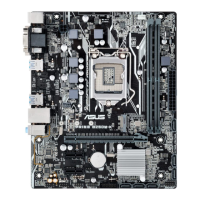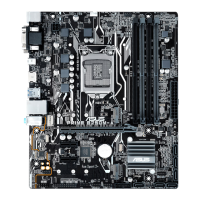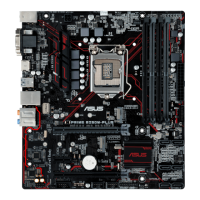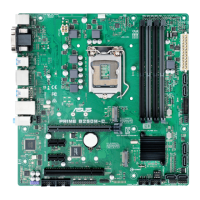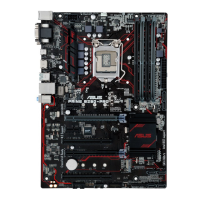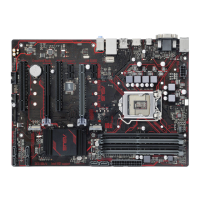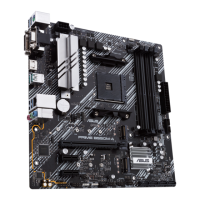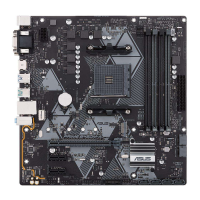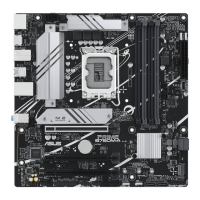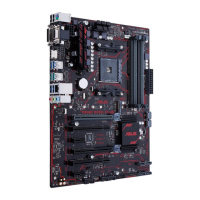Do you have a question about the Asus PRIME B250M-C and is the answer not in the manual?
Details about the CPU socket, compatibility, and installation.
Information regarding DDR4 DIMM slots, installation, and compatibility.
Instructions for connecting CPU and chassis fans to motherboard headers.
Guide for correctly connecting the ATX power supply to the motherboard.
Details on installing M.2 SSD modules and Intel Optane Memory.
Guide to installing the Intel LGA1151 socket CPU and safety precautions.
Instructions for installing DDR4 memory modules into the DIMM slots.
Details on connecting Serial ATA 6.0Gb/s hard drives.
Information on connecting USB 3.0 front or rear panel modules.
Step-by-step instructions for installing the CPU into the socket.
Step-by-step instructions for installing memory modules into DIMM slots.
Details CPU socket type, supported processors, and Turbo Boost Technology.
Information on the Intel B250 Chipset and DDR4 memory specifications.
Introduction to using the BIOS Setup utility for configuration and updates.
Methods to access BIOS Setup during startup or after POST.
Details on connecting USB 2.0 and USB 3.0 devices for data transfer.
Information on connecting displays via HDMI and DVI-D ports.
Precautions for safe handling and electrical safety during system use.
| Memory slots type | DIMM |
|---|---|
| Unbuffered memory | Yes |
| Number of memory slots | 4 |
| Supported memory types | DDR4-SDRAM |
| Maximum internal memory | 64 GB |
| Supported memory clock speeds | 2133, 2400 MHz |
| Processor socket | LGA 1151 (Socket H4) |
| Processor manufacturer | Intel |
| Compatible processor series | Intel Celeron, Intel Pentium |
| Component for | PC |
| Power source type | ATX |
| Motherboard chipset | Intel® B250 |
| Audio output channels | 7.1 channels |
| Motherboard form factor | micro ATX |
| LAN controller | Intel® I219-V |
| Ethernet interface type | Gigabit Ethernet |
| BIOS type | UEFI AMI |
| ACPI version | 5.0 |
| BIOS memory size | 64 Mbit |
| PCI Express x1 (Gen 3.x) slots | 2 |
| PCI Express x16 (Gen 3.x) slots | 1 |
| Number of SATA III connectors | 6 |
| USB 3.2 Gen 2 (3.1 Gen 2) connectors | 0 |
| USB 2.0 ports quantity | USB 2.0 ports have a data transmission speed of 480 Mbps, and are backwards compatible with USB 1.1 ports. You can connect all kinds of peripheral devices to them. |
| Width | 244 mm |
|---|
